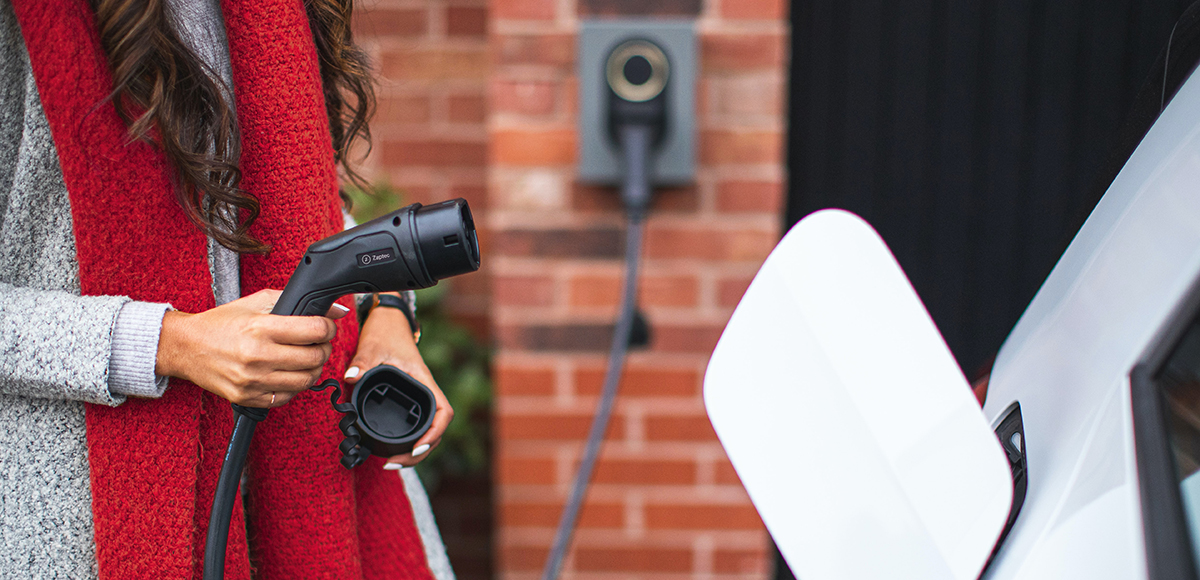19 MAY 2025
Contact trials innovative solution to enhance EV charging
- Contact launches pilot using innovative technology to make it easy for Electric Vehicle (EV) owners to charge their car when electricity demand is at its lowest.
- The pilot aims to ease pressure on the national electricity grid as EV use increases1.
- The pilot also aims to help reduce reliance on fossil fuels, supporting the decarbonisation of New Zealand.

With the increasing number of EVs on New Zealand’s roads, Contact Energy (Contact) is looking to ease pressure on the national electricity grid. This could also help EV drivers reduce the cost of charging their vehicles in the long-term.
According to the Electric Vehicle Database’s market stats, at the end of April 2025 more than 82,500 fully electric vehicles and 37,300 plug-in hybrids were in use in New Zealand.
Charging an EV can increase a household’s energy use by up to 30 percent says Powerswitch2. This can put a strain on the national electricity grid during periods of high energy demand, such as first thing in the morning or in the evening.
To help reduce this, Contact is piloting an EV Demand Flex programme. This will use technology to determine when energy demand is low and then automatically charge customers’ EVs. If there is a sudden increase in electricity demand, the technology will stop charging the vehicle until demand subsides.
There are many benefits to this pilot, explains Contact’s Acting Chief Retail Officer Michael Robertson.
“At scale, this technology would allow customers to charge their vehicles when demand is low, potentially helping them make savings on their power bill. It will also help ease pressure on the national grid, support New Zealand’s energy supply, and reduce reliance on energy generated by fossil fuels,” says Michael.
“Pausing charging an EV, even for a short period of time, contributes to reducing high electricity demand, ensuring electricity goes where it is most needed. It’s hard to predict on any given day when there will be an increase in energy demand and that’s what makes the EV Demand Flex technology so innovative.
“Plus, our customers can rest easy knowing their EV will be charged to the level they want, ready for when they need it,” says Michael
The pilot begins on Tuesday 3 June and may run up to a year. This will deliver valuable information about people’s charging behaviours and enable Contact to finetune the EV Flex programme. If the pilot is successful, Contact will expand the programme.
The EV Demand Flex pilot will run in addition to Contact’s Hot Water Sorter programme, launched in April 2024. So far this has helped 14,000 Kiwi households to reduce their energy usage by turning their hot water cylinders off during peak hours.
For the last four years Contact has also been offering ‘Good’ time of use electricity plans. These plans provide free power during times of low demand, such as at night or at the weekend, rewarding customers for taking pressure off the grid. More than 130,000 Contact customers are on one of the Good Plan range, and these customers have collectively benefited from 215 million hours of free power.
ENDS
Media enquiries
Lotty Hird, Senior Communications Advisor
M: 027 207 8684 E: [email protected]
More information
1 Data from Electric Vehicle Database’s April market stats shows more than 82,500 fully electric vehicles and 37,300 plug-in hybrids were in use in New Zealand.
2 An electric vehicle can typically increase household electricity use by around 20 to 30 percent according to data from Powerswitch, which can be found here.
What does Demand Flex mean?
Demand Flex is a way an electricity company can support households to make the most of their energy usage by remotely coordinating items, such as charging EV batteries or heating hot water to times of the day when demand is low. This helps to take pressure off the national electricity grid and could reduce the household’s electricity bill as energy prices tend to be lower at off-peak times. The electricity company does this by using special software and customer preferences, for example, how much electricity a customer needs to charge their EV at any given time.






